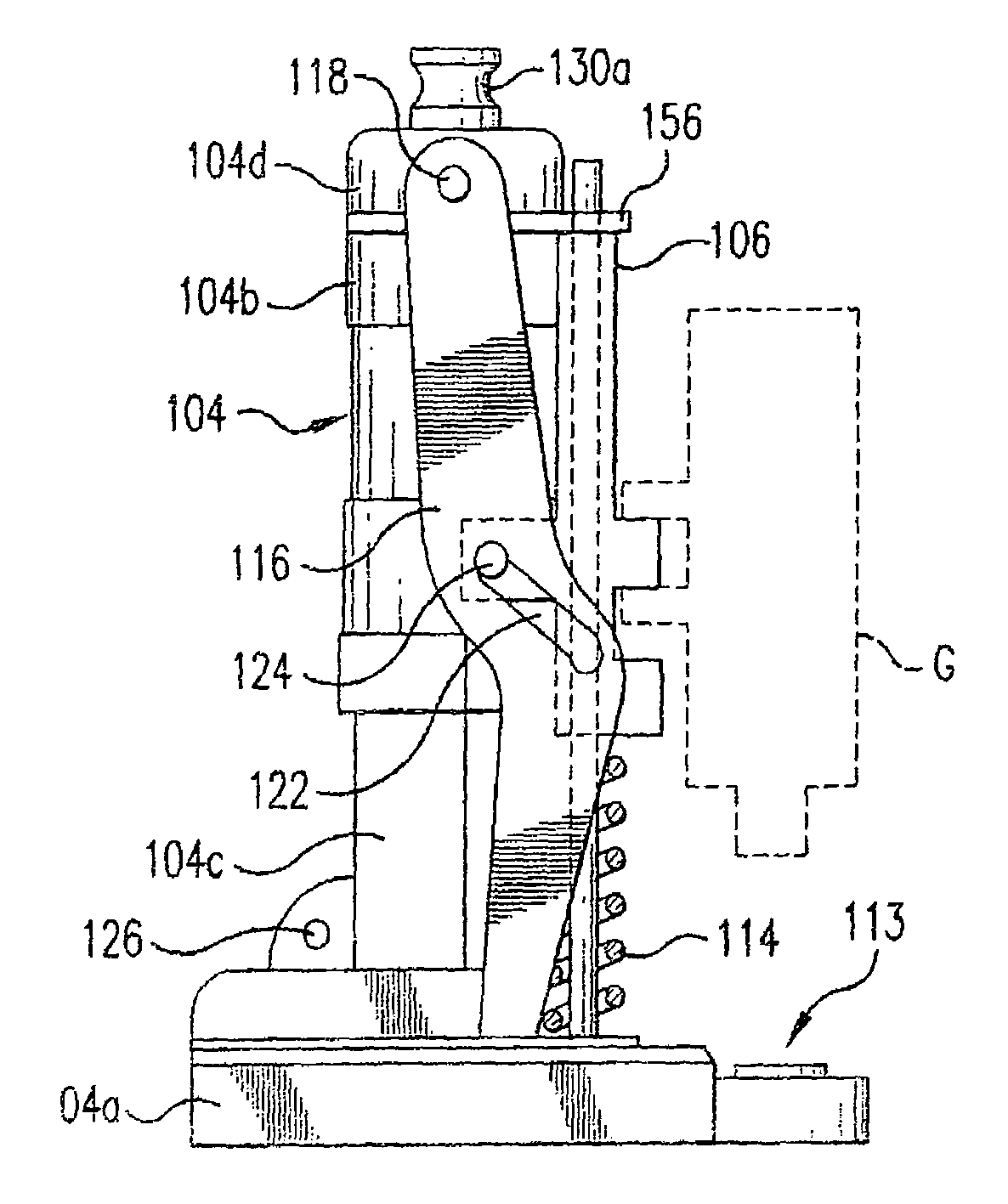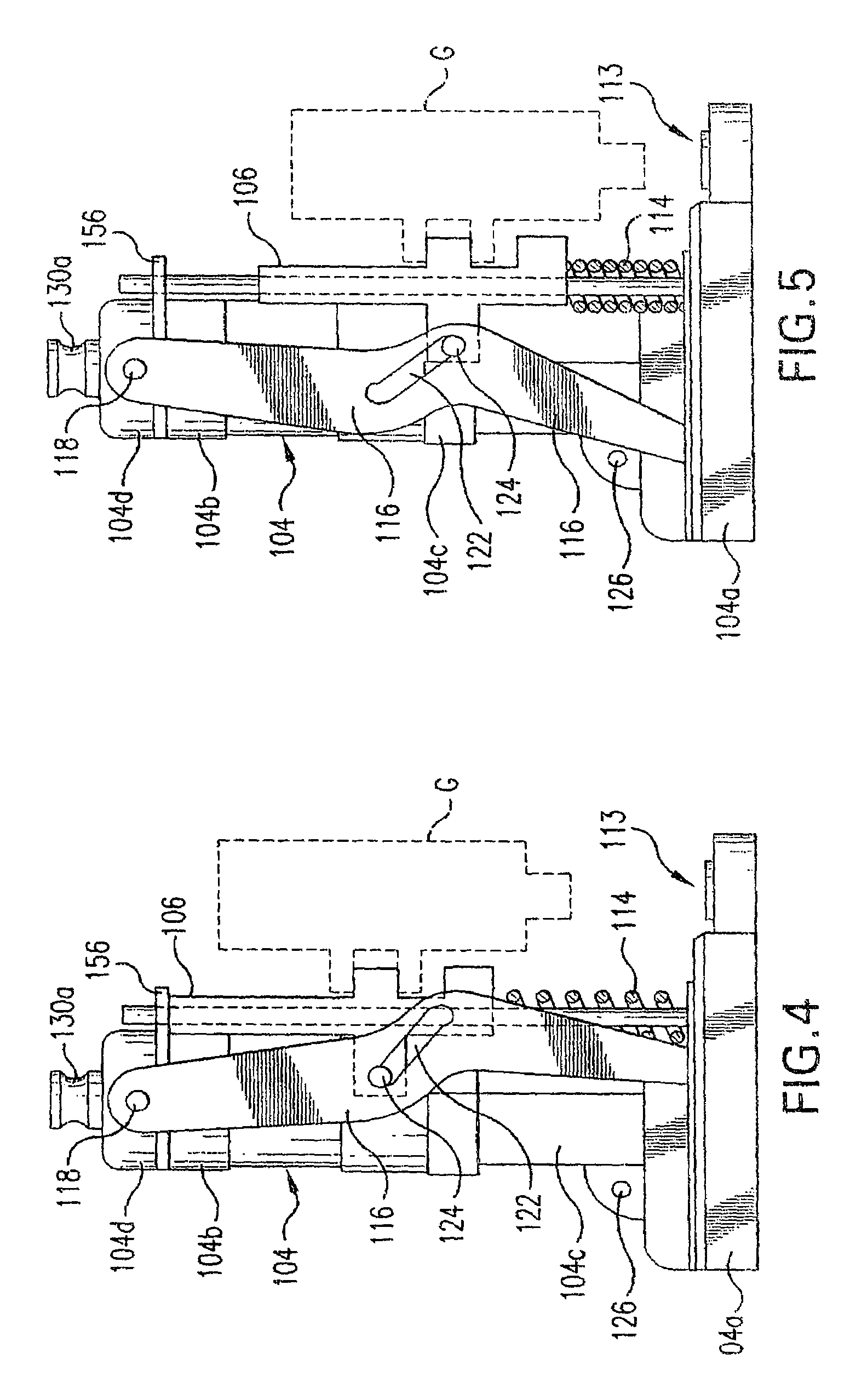Tin tag dispensing and nailing tool
a technology for nailing tools and tin tags, which is applied in the direction of manufacturing tools, clothe making applications, transportation and packaging, etc., can solve the problem of reducing the life of tools
- Summary
- Abstract
- Description
- Claims
- Application Information
AI Technical Summary
Benefits of technology
Problems solved by technology
Method used
Image
Examples
Embodiment Construction
[0028]Referring first more particularly to FIGS. 1-3, it is known in the prior art to provide an attachment means 2 for supplying tin tags to a nailing gun G. The attachment means includes a housing 4 having a horizontal base portion 4a, and a generally cylindrical hollow upwardly extending vertical body portion 4b. An operating member 6 is connected by a circular sleeve 8 for vertical sliding movement relative to the body portion 4b. A conventional nailing gun G is fastened to the operating member 6 by screw thread fastener means (not shown) extending through fastening holes 10. The nailing gun G is directed downwardly toward tin tag support means 12 arranged at a nailing station 13 on the housing base portion 4a. Compression spring means 14 bias the operating member 6 upwardly toward a retracted position relative to the housing base portion 4a. Linkage means are provided for operating shuttle means to displace tin tags from a stack contained within the housing body portion 4b from...
PUM
 Login to View More
Login to View More Abstract
Description
Claims
Application Information
 Login to View More
Login to View More - R&D
- Intellectual Property
- Life Sciences
- Materials
- Tech Scout
- Unparalleled Data Quality
- Higher Quality Content
- 60% Fewer Hallucinations
Browse by: Latest US Patents, China's latest patents, Technical Efficacy Thesaurus, Application Domain, Technology Topic, Popular Technical Reports.
© 2025 PatSnap. All rights reserved.Legal|Privacy policy|Modern Slavery Act Transparency Statement|Sitemap|About US| Contact US: help@patsnap.com



